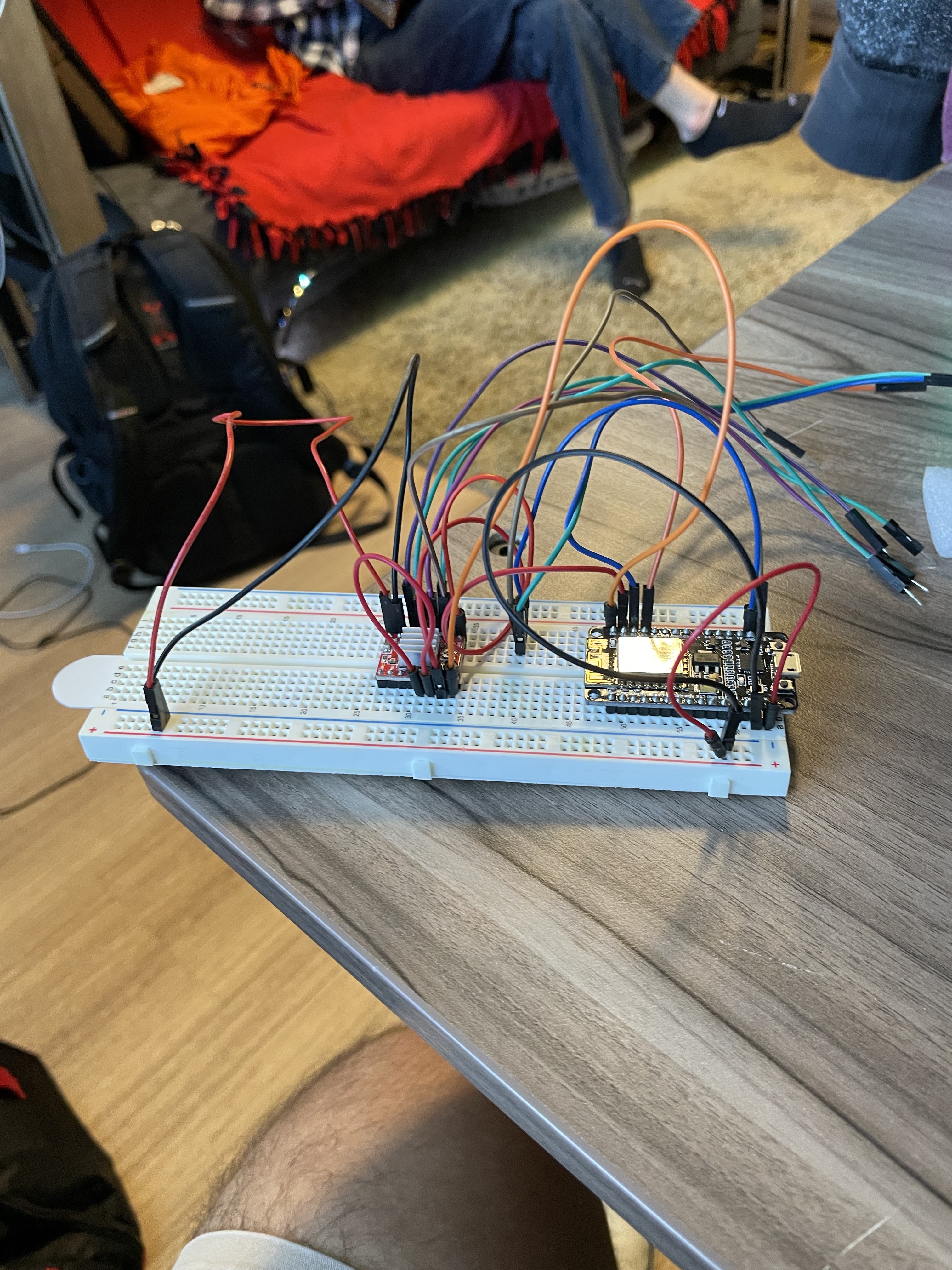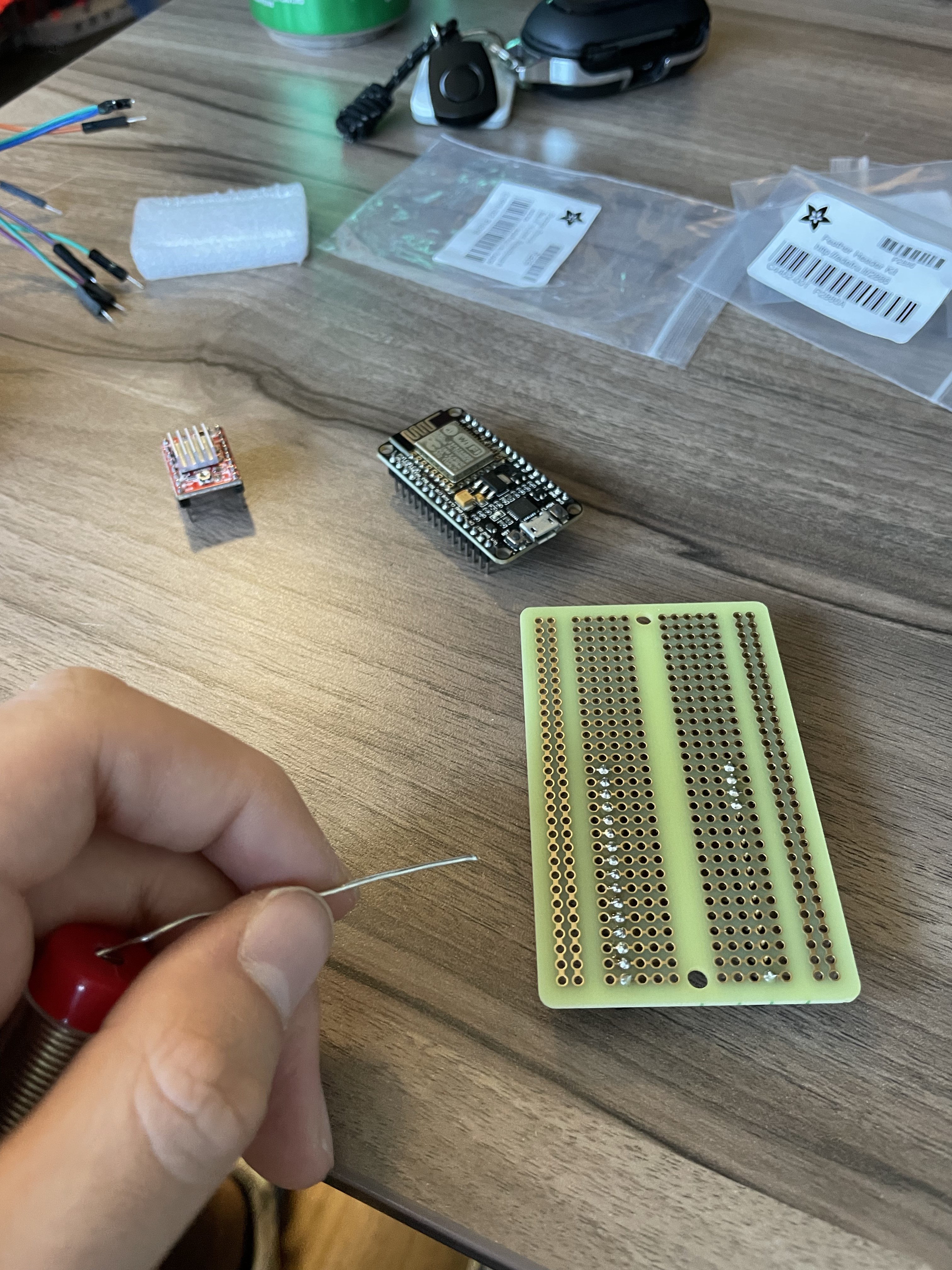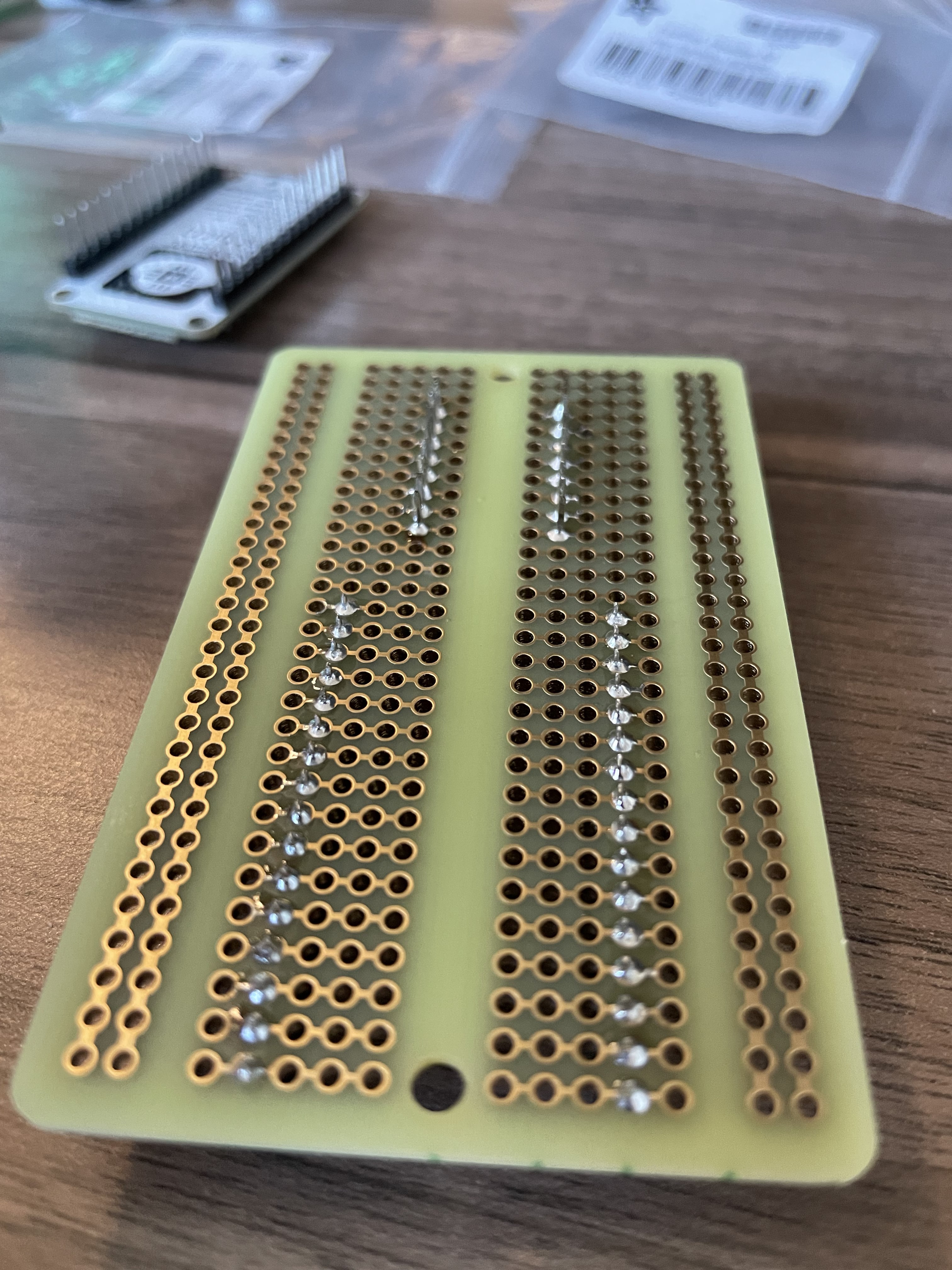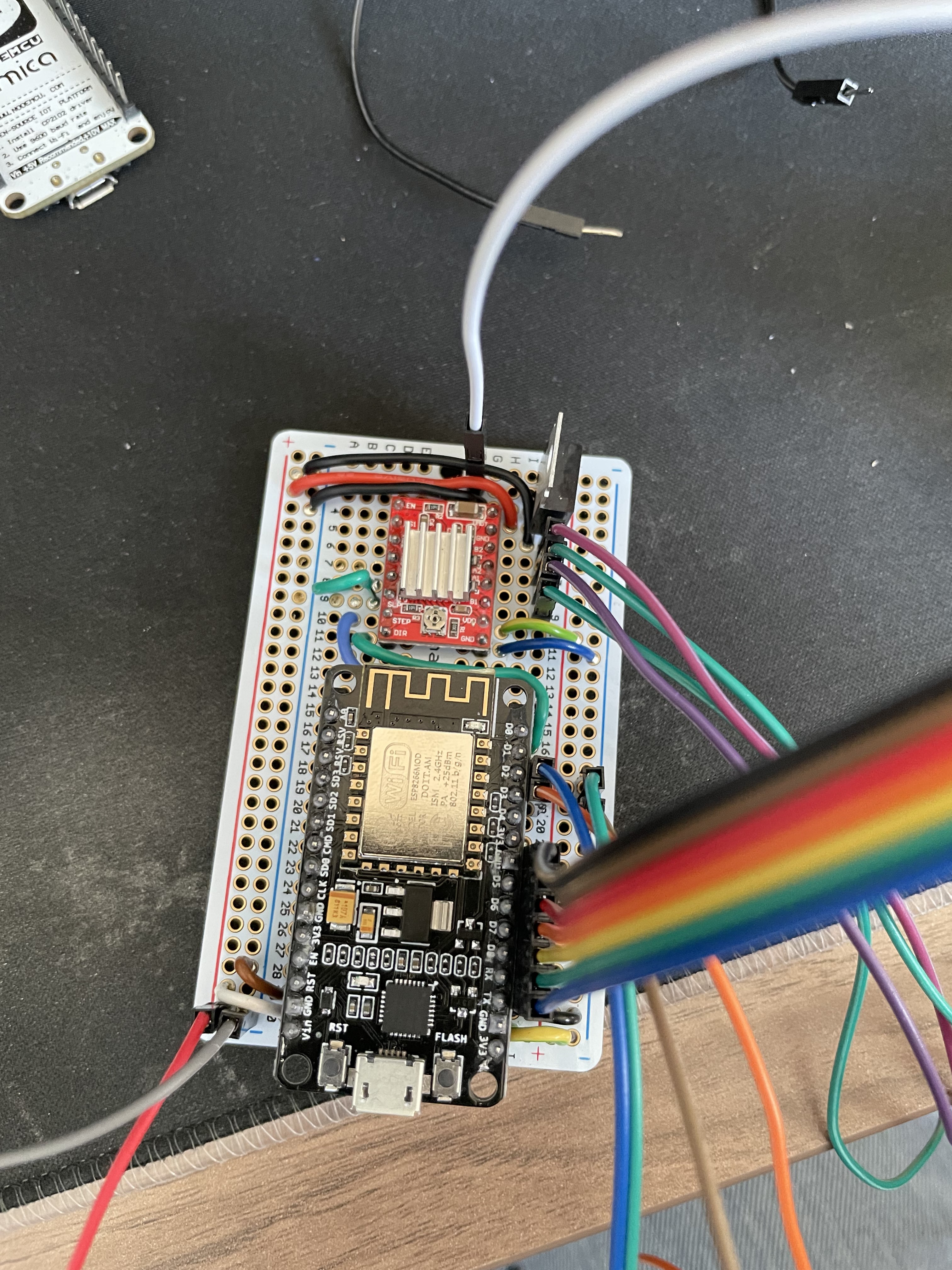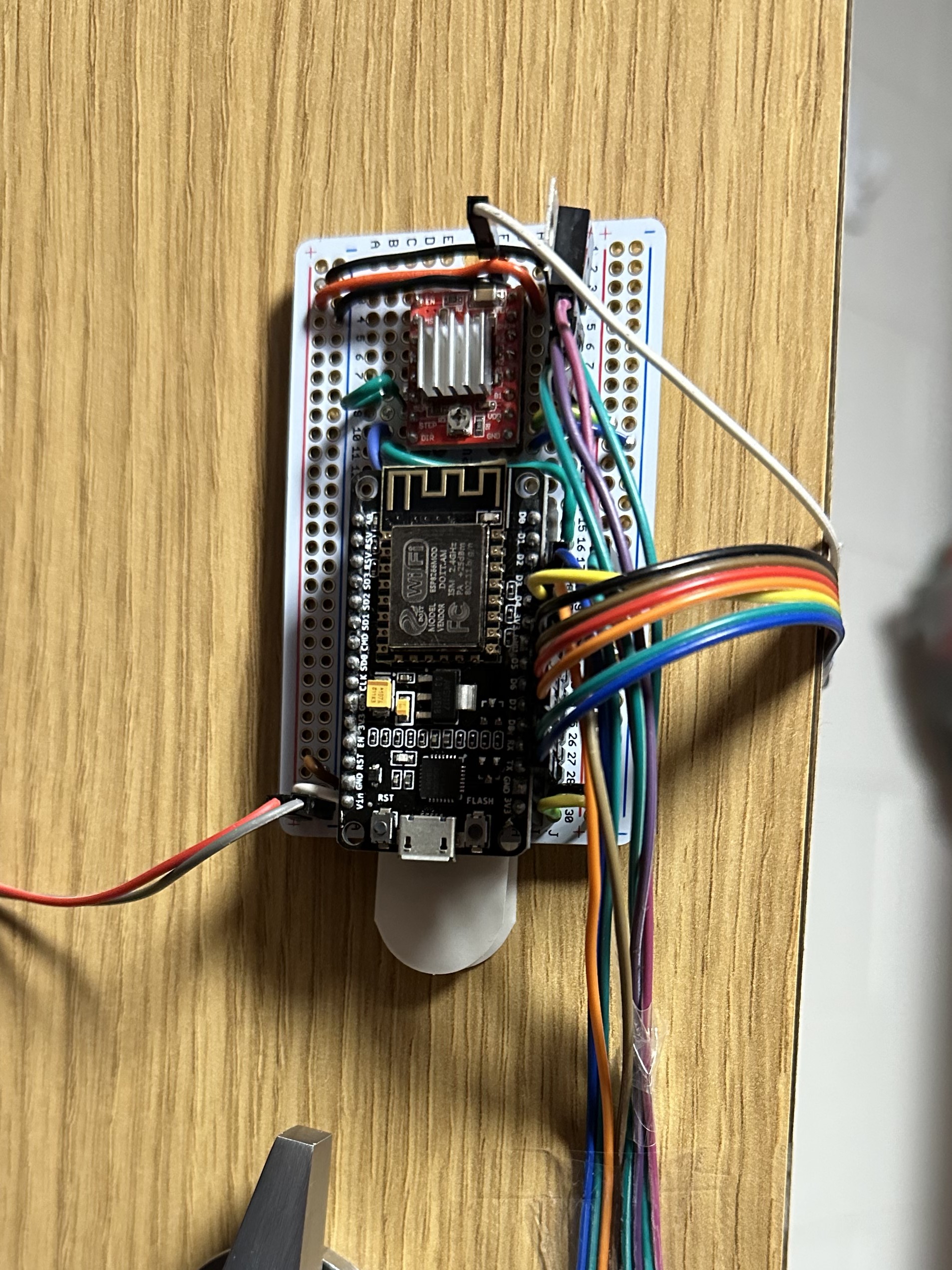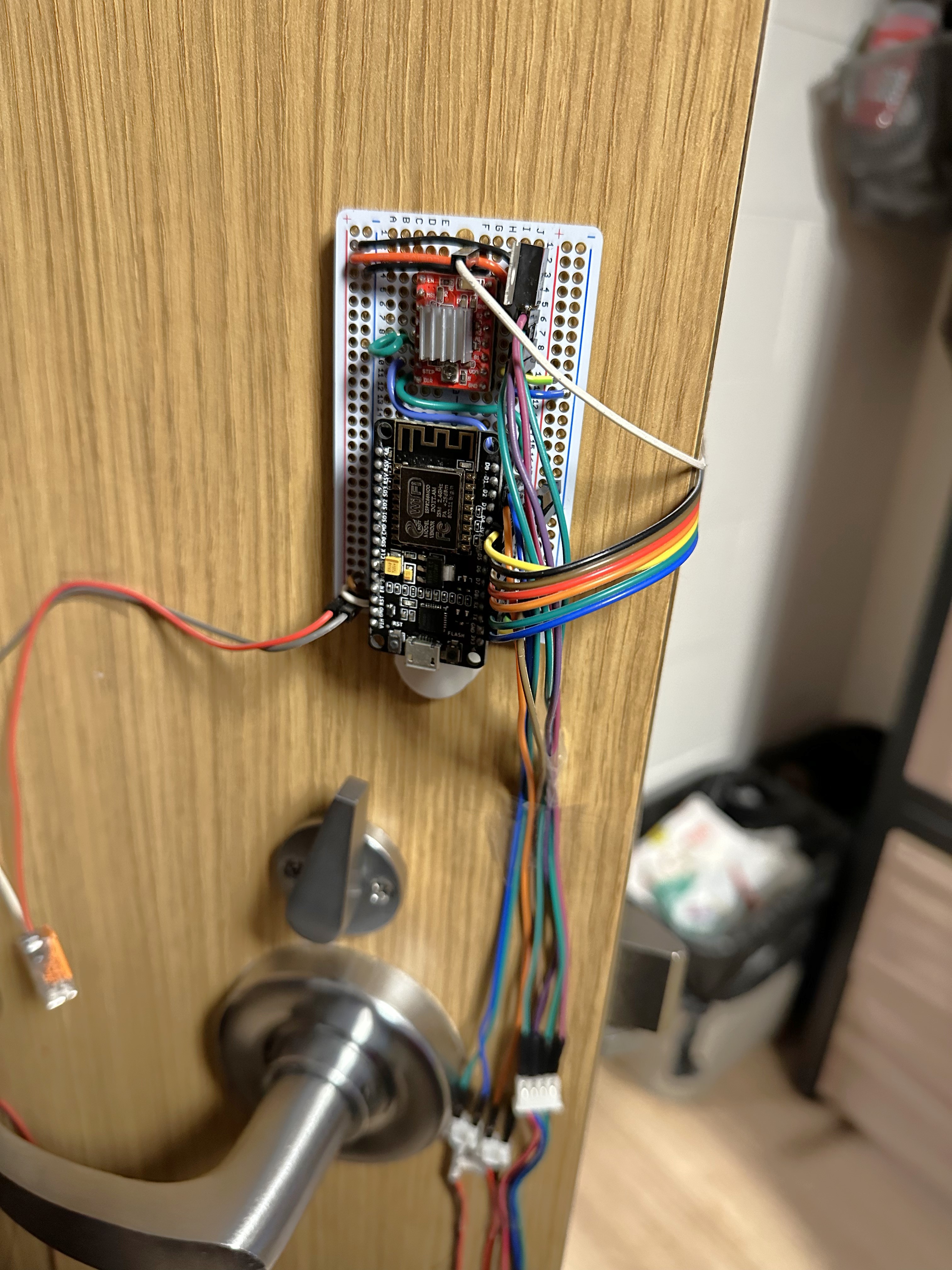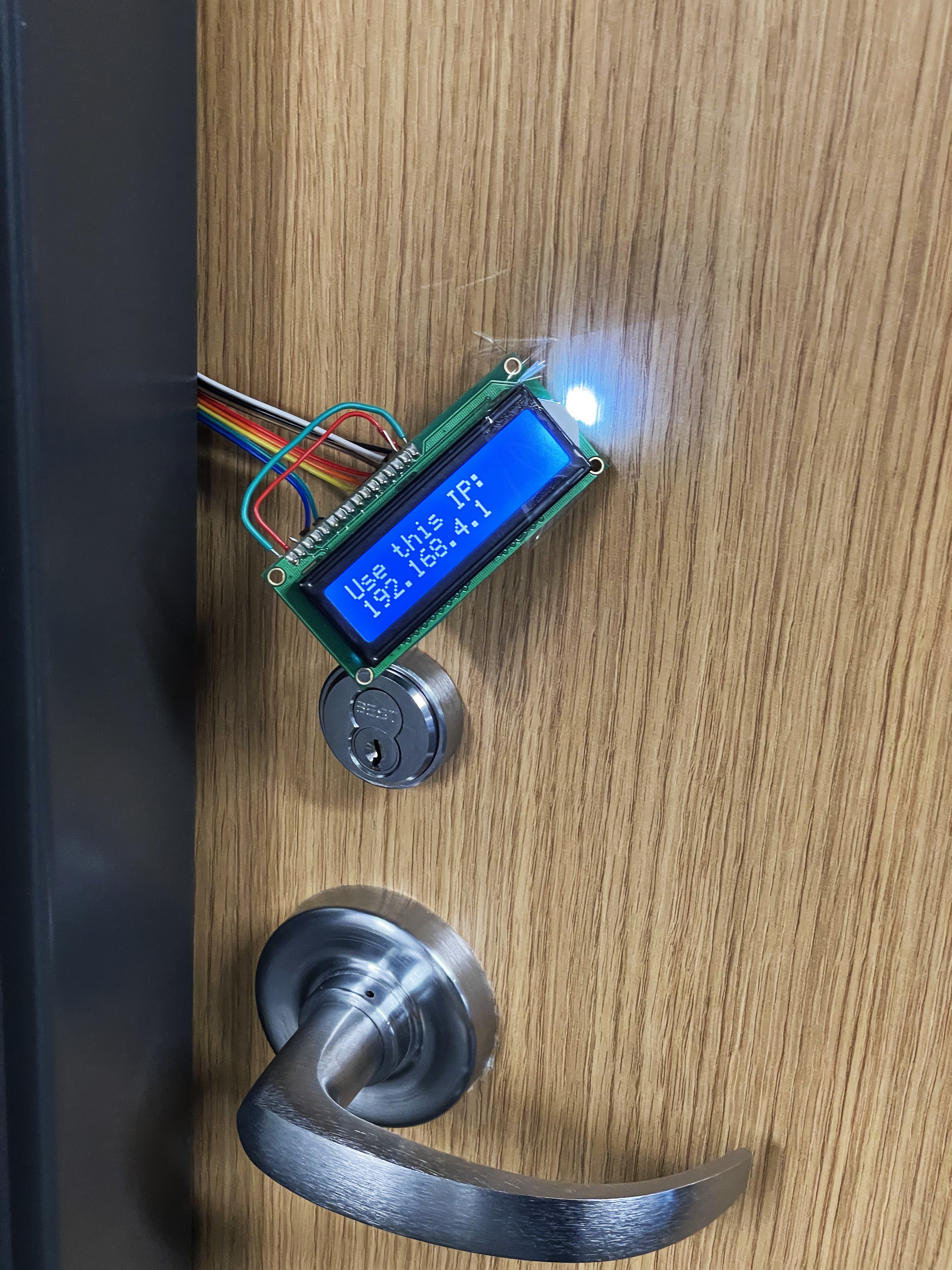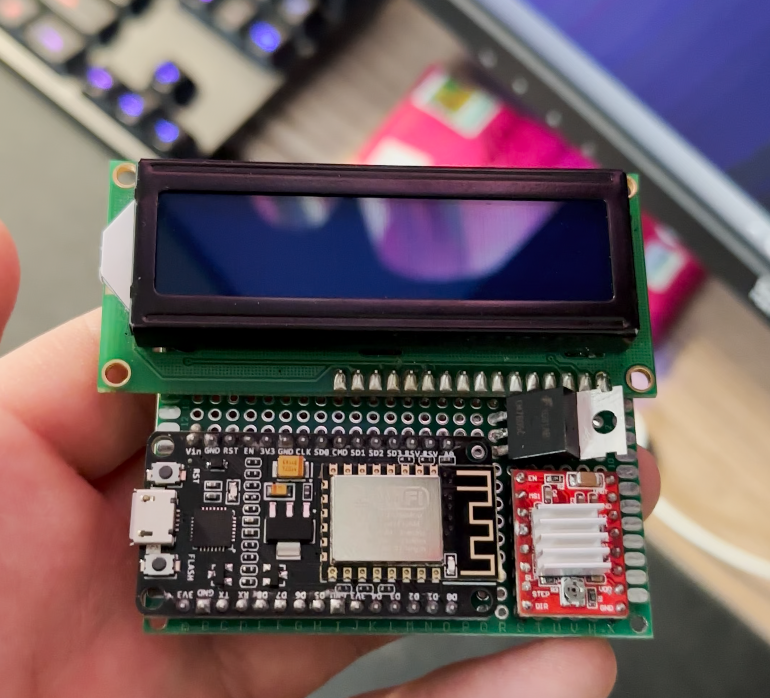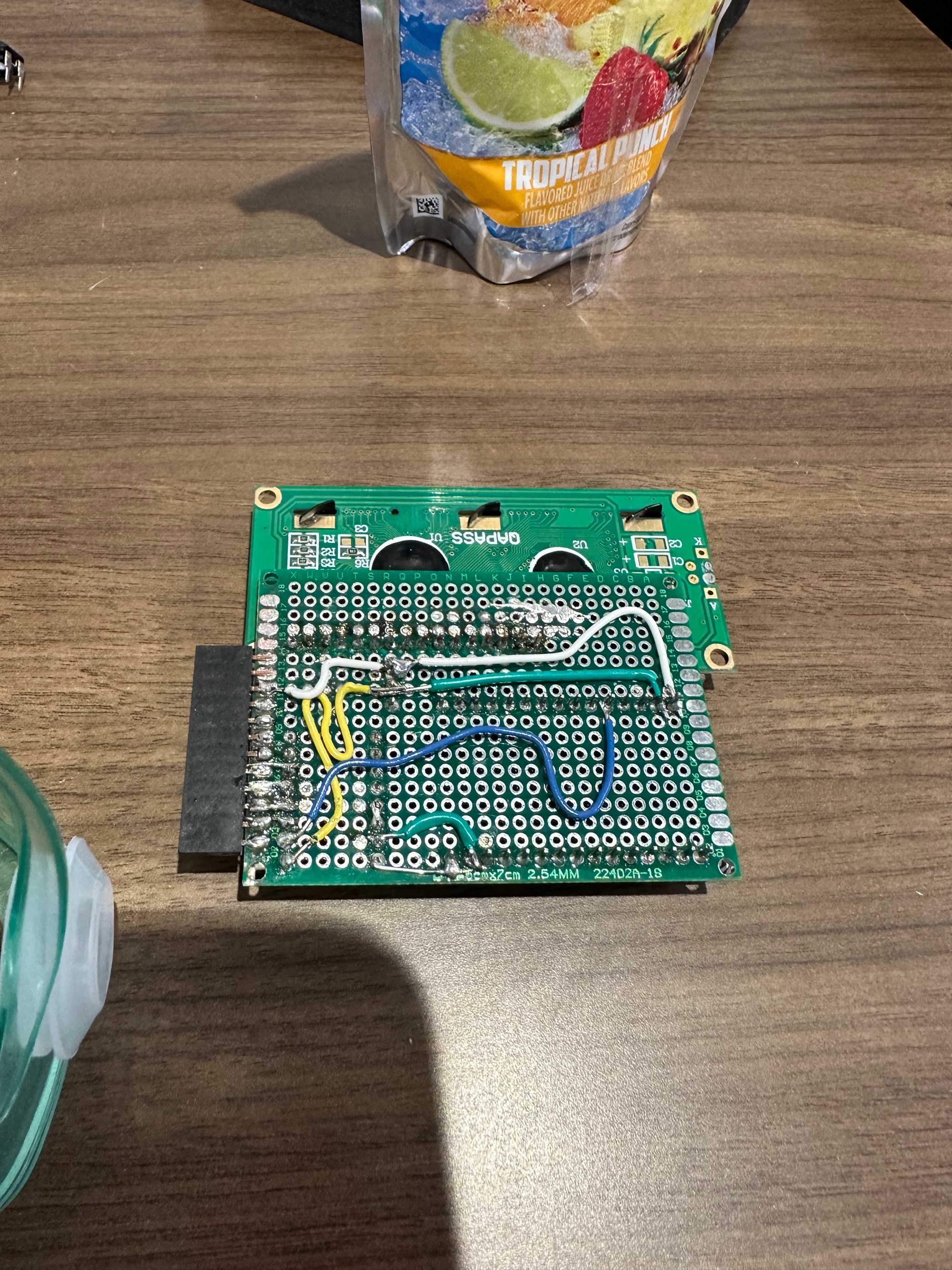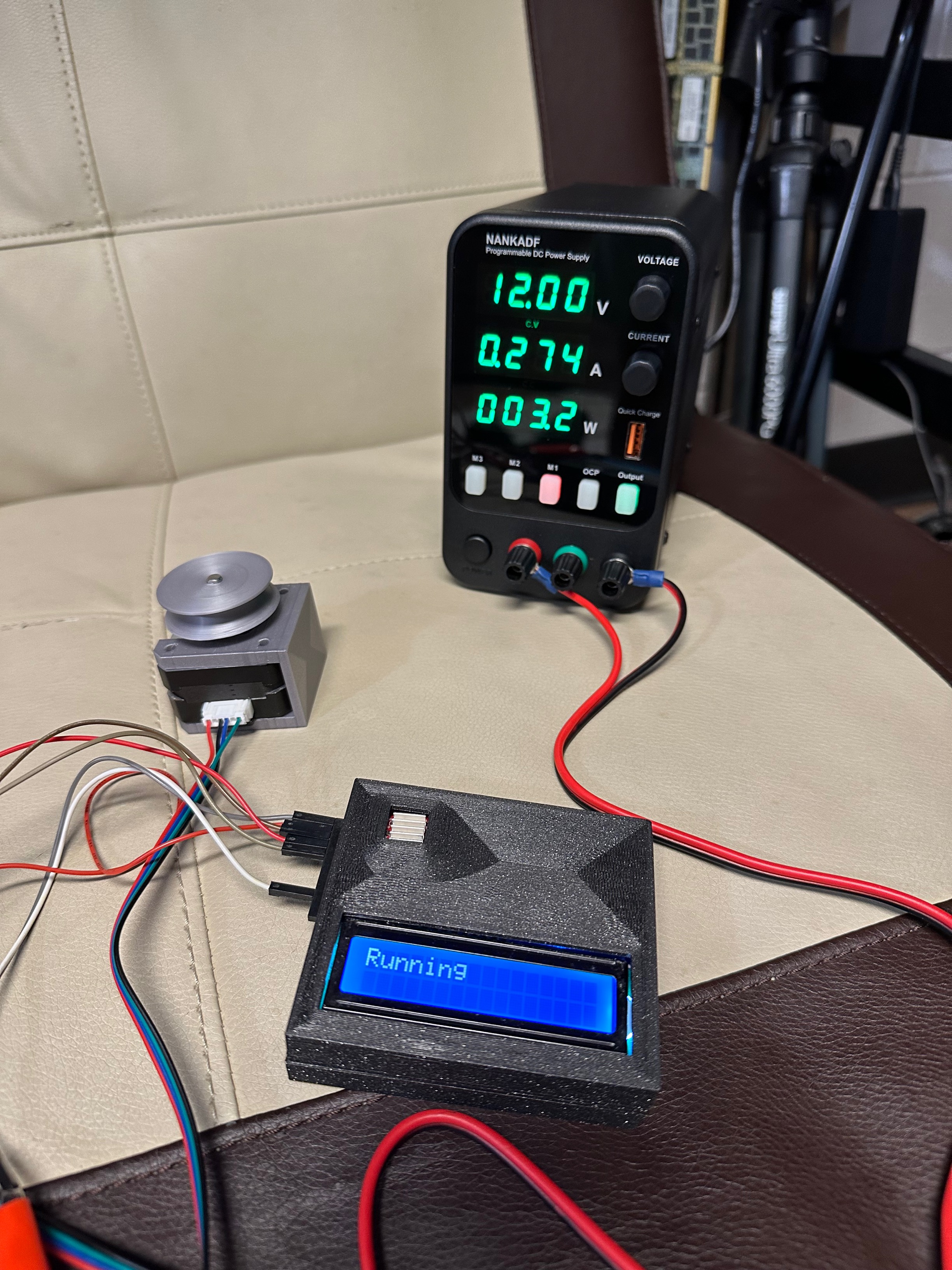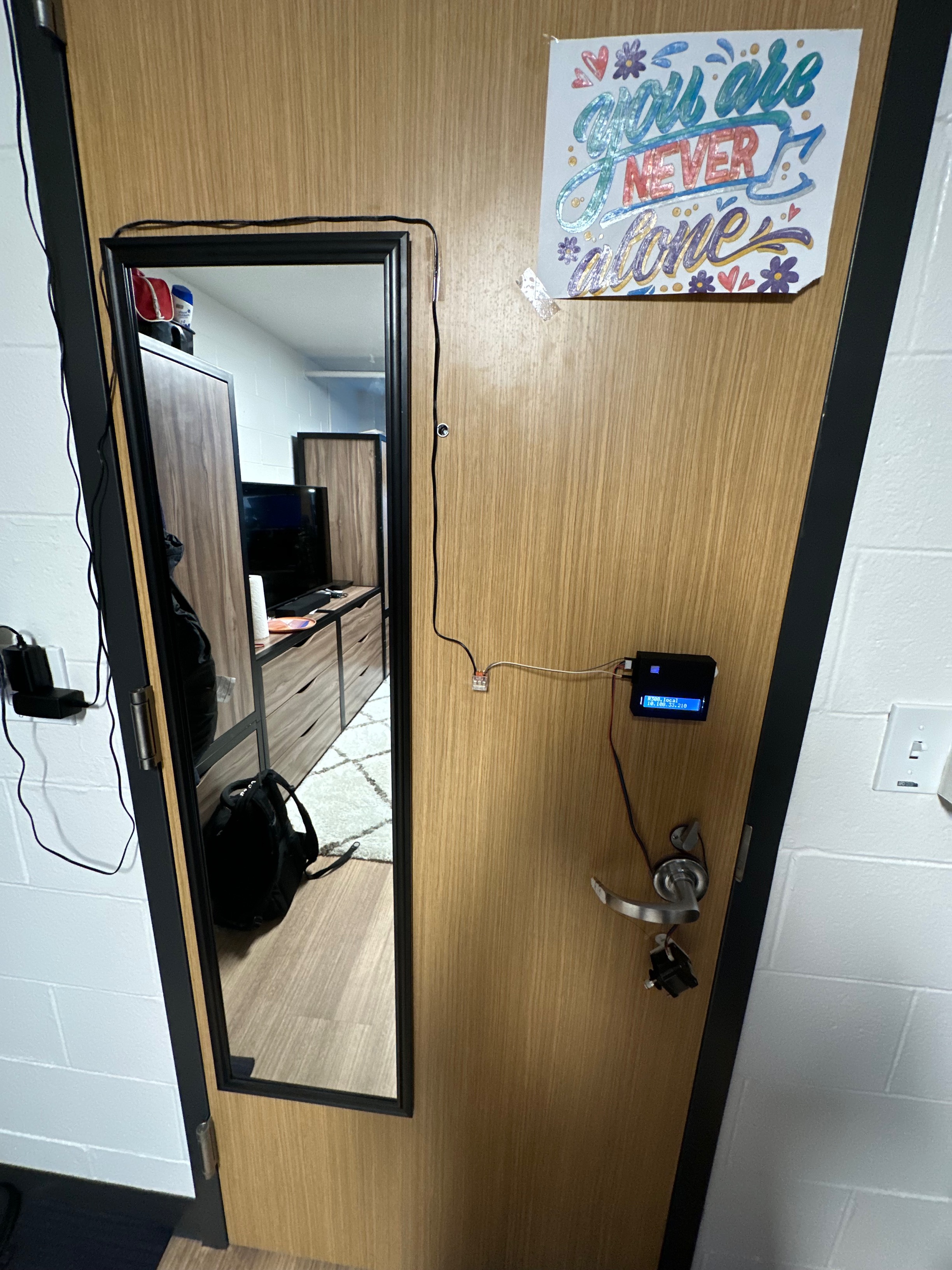Problem Statement
When I moved into my college dorm room, I quickly realized that my roommate and I had a nack for losing our keys. As a result we decided to build a machine to open our door for us; therefore, we could reduce the chance of being locked out.
Solution
The solution to the problem was a machine that would be able to open my door for me. I thought about the possible ways to achive this and eventually settled on the idea of having a web interface and a machine that would operate remotely from that interface. The machine would eventually consist of a stepper motor, an ESP8266 NodeMCU, and a few other parts. This machine is attached to the door, and then acts as a server that responds to clients. When a client presses a button on the website, the server responds by turning on the stepper motor.
Moreover, the full parts list and skills required are as follows.
- NodeMCU v1.0 ESP8266
- A4988 Stepper Driver
- Nema 17 Stepper Motor
- 8x2 LCD Display
- C++
- HTML
- CSS
Code can be found at my github.

